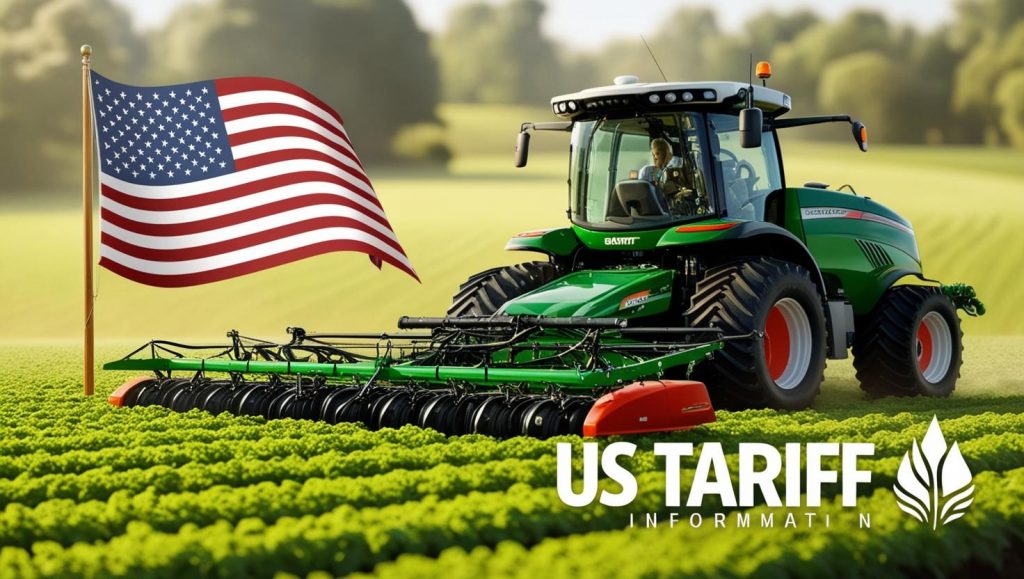The agricultural sector has undergone a major transformation in recent years with the rise of precision farming—a method that leverages GPS, sensors, drones, and data analytics to boost efficiency and yield. But this transformation has not come without hurdles. One of the biggest roadblocks emerged from U.S. trade policy during the Trump administration, when a wave of tariffs—particularly those targeting China—disrupted global supply chains and led to rising costs across the precision farming value chain.
From tractors embedded with AI to drone-based crop monitoring systems, the precision farming industry heavily relies on imported components and electronics. The Trump tariffs, especially those targeting steel, aluminum, and electronic components, created ripple effects that increased equipment prices, delayed technology adoption, and forced industry players to reevaluate sourcing strategies.
Book Your “Trump Tariff Threat Assessment”
https://www.marketsandmarkets.com/pdfdownloadNew.asp?id=1243
Tariffs That Shook the Ground Beneath Precision Farming
In 2018, the Trump administration imposed tariffs on billions of dollars’ worth of Chinese goods, citing unfair trade practices and the need to protect U.S. manufacturing. Among the targeted goods were critical components used in precision farming equipment, such as:
- Semiconductors and microcontrollers
- GPS modules and electronic sensors
- Steel and aluminum parts for machinery
- Wiring and control systems
The tariffs ranged from 10% to 25%, significantly raising the cost of both raw materials and finished equipment used in modern farming. The result? A technology-dependent industry suddenly faced a cost crunch that threatened its growth trajectory.
Disrupted Global Supply Chains
The impact of these tariffs went beyond pricing—it disrupted established global supply chains that precision ag companies had built over years. Key disruptions included:
- Delays in equipment manufacturing due to limited access to affordable imported parts.
- Increased lead times for drone systems, smart irrigation tools, and other precision equipment.
- Supplier shifts as manufacturers were forced to find non-Chinese sources, often at higher costs or with less reliability.
- Uncertainty in product delivery during critical planting and harvesting periods.
This created a domino effect for farmers, especially those operating on tight margins or reliant on seasonal cash flows.
Cost Pressures on Farmers and AgTech Companies
While large agricultural enterprises had the resources to absorb short-term cost hikes, smaller farms and AgTech startups faced tougher choices. Farmers postponed equipment upgrades, delayed adoption of new technology, or reverted to traditional farming methods. At the same time, emerging agri-tech innovators struggled with thinner margins and limited access to capital due to increased production costs.
Notably, precision farming tools that rely on fine-tuned imports—like variable rate applicators, soil health sensors, and remote-sensing drones—saw the highest price spikes.
Long-Term Impacts and Strategic Shifts
While the immediate effects of Trump-era tariffs were largely negative for the precision farming sector, some long-term shifts are now emerging:
Positive Strategic Responses:
- Domestic manufacturing gains as companies seek to reduce dependence on foreign suppliers.
- R&D investment growth into lower-cost alternatives and modular technologies.
- Greater policy engagement by agri-tech coalitions advocating for tariff relief and technology-friendly trade policies.
Lingering Challenges:
- Inflationary pressures on agri-inputs and farm equipment continue to affect adoption.
- Market uncertainty around future tariff policies adds hesitation among investors and farmers.
- Lost momentum in innovation cycles, particularly for startups that faced high sourcing costs and delays.
Trump-era tariffs introduced a storm of supply chain disruptions and rising costs that continue to reverberate through the precision farming industry. While some resilience has been built through domestic manufacturing and diversified sourcing, the sector remains sensitive to trade policy shifts.
As the U.S. navigates a new era of trade and technology leadership, it will be critical to align agricultural innovation goals with trade frameworks that support—not hinder—growth. For precision farming to fulfill its promise of smarter, more sustainable agriculture, stable supply chains and affordable technology must remain a top priority.

